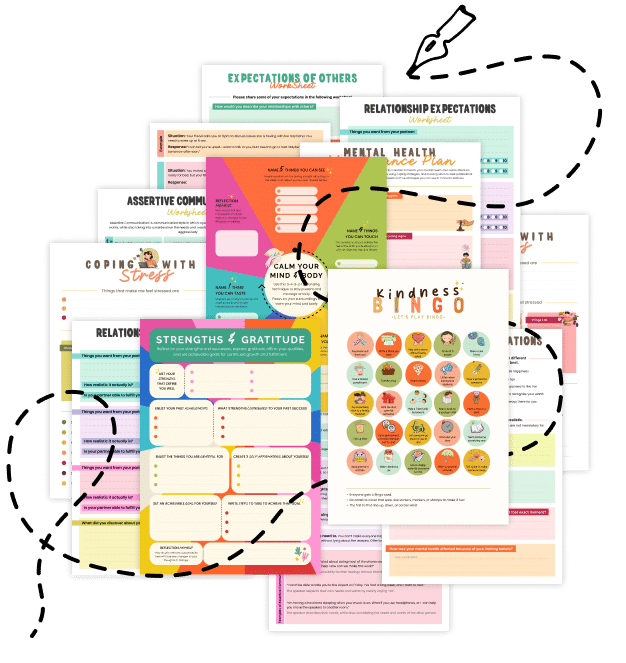20 Things You Should Know About Biofeedback Loops
Explore how Biofeedback Loops help you gain control over physical processes—like heart rate and muscle tension—to reduce stress, enhance focus, and improve overall well-being. Learn 20 key insights on harnessing biofeedback for better health.
1. What Are Biofeedback Loops?
Biofeedback Loops refer to the continuous process of measuring physiological signals (like heart rate, muscle tension, or skin temperature) and providing that real-time information back to you. By seeing or hearing these signals, you can learn to adjust your body’s responses consciously.
2. The Core Principle of Biofeedback Loops
Biofeedback is based on the idea that when you become aware of your body’s processes, you can make voluntary changes to them. This awareness–adjustment cycle forms a loop, guiding you toward healthier patterns.
3. Common Biofeedback Loops Measurements
Biofeedback devices often track:
- Heart Rate Variability (HRV)
- Muscle Activity (EMG)
- Skin Conductance (GSR)
- Respiration Rate
- Temperature
Each metric highlights different aspects of your physiological state.
4. Real-World Applications
Biofeedback is used to manage stress, anxiety, chronic pain, migraines, and even hypertension. It’s also popular among athletes and performers looking to optimize focus and control arousal levels.
5. The Role of Technology
Modern biofeedback often involves wearable devices, apps, or specialized software. These tools display immediate data—like heart rate or tension levels—on a screen, guiding you to make real-time adjustments.
6. Stress Reduction Benefits
When stressed, your body shows telltale signs—like increased heart rate or tense muscles. Biofeedback helps you recognize these signals early, so you can practice relaxation techniques and prevent escalation.
7. Enhancing Focus and Performance
By learning to regulate arousal levels (e.g., heart rate variability), you can enter a state of calm alertness, crucial for high-stakes tasks like public speaking, sports events, or exams.
8. Building Emotional Resilience
As you gain control over your body’s stress responses, you also become more emotionally resilient. Knowing you can modulate your physiological state boosts confidence and reduces fear.
9. Patient-Centered Therapy
Biofeedback loops are often integrated into therapeutic settings. Therapists may use biofeedback to help clients with conditions like PTSD, helping them recognize and stabilize their body’s reactions to triggers.
10. Creating Positive Habits
By seeing the direct impact of your actions (e.g., deep breathing) on your physiological readings, you’re more likely to develop and maintain healthy habits. The immediate feedback is a strong motivator.
11. The Role of Breathing
Deep, slow breathing is a common technique used alongside biofeedback. Monitoring heart rate or muscle tension while adjusting your breaths reveals how powerful controlled respiration can be in calming your system.
12. Practical Biofeedback Exercises
- Heart Rate Training: Watch your heart rate in real time and practice techniques (like inhaling for 4 counts, exhaling for 4 counts) to lower it.
- Muscle Relaxation: Use EMG readings to see which muscles are tense, then systematically relax them.
13. Learning Curve and Patience
It takes time to learn how to interpret and act on biofeedback data. Consistent practice is key; each session helps you fine-tune your ability to respond appropriately to your body’s signals.
14. Limitations and Considerations
Biofeedback isn’t a magic cure-all. It’s most effective when part of a comprehensive approach to health, including proper exercise, nutrition, and, in some cases, professional support for underlying conditions.
15. Integrating Mindfulness
Pairing biofeedback loops with mindfulness amplifies the benefits. As you monitor your body’s signals, you also learn to observe thoughts and emotions without judgment, creating a holistic mind-body practice.
16. Avoiding Over-Reliance on Devices
While technology aids in learning biofeedback, it’s important not to become too dependent. The ultimate goal is to sense and regulate bodily processes without external prompts, gaining lasting self-control.
17. Home-Based Training vs. Professional Guidance
Affordable at-home devices exist for basic biofeedback (like heart rate monitors or smartphone apps). For more complex conditions or advanced training, working with a therapist or specialized practitioner can provide tailored support.
18. Workplace Wellness
Employers increasingly integrate biofeedback in wellness programs. Short biofeedback sessions can reduce workplace stress, boost productivity, and enhance employee well-being.
19. Athletic and Creative Performance
From marathon runners to musicians, professionals use biofeedback to hit an optimal performance zone. By modulating arousal levels, they can maintain focus and endurance under pressure.
20. Related Topics to Explore
- Mindful Acceptance: Observing bodily sensations without judgment to reduce stress.
- Cognitive Load Theory: Managing mental resources to avoid overwhelm.
- Task-Specific Anxiety Management: Pairing biofeedback with targeted interventions for nerve-inducing tasks.
- Self-Talk Restructuring: Reinforcing biofeedback gains with positive internal dialogue.
Quick Tips for Starting with Biofeedback
- Choose a Metric: Start with a simple measure (heart rate or muscle tension).
- Use Guided Sessions: Apps or basic training modules help interpret readings.
- Set a Schedule: Regular sessions—5-10 minutes daily—build consistency.
- Track Progress: Note improvements in stress levels or focus as you practice.
- Combine Techniques: Mix deep breathing, mindfulness, or relaxation with the data you receive for holistic benefits.
Biofeedback Loops offer a tangible way to connect with your body’s signals and actively shape your mental and emotional states. By recognizing how stress or tension manifests in real time and practicing healthy responses, you become more skilled at self-regulation. Whether you’re aiming to reduce stress, enhance focus, or refine athletic performance, biofeedback can be a powerful ally in unlocking your body’s natural capacity for balance and well-being.
Share this article with anyone curious about exploring biofeedback for stress management or improved performance. With patience, practice, and the right tools, you can learn to guide your body’s responses and cultivate lasting mind-body harmony!

